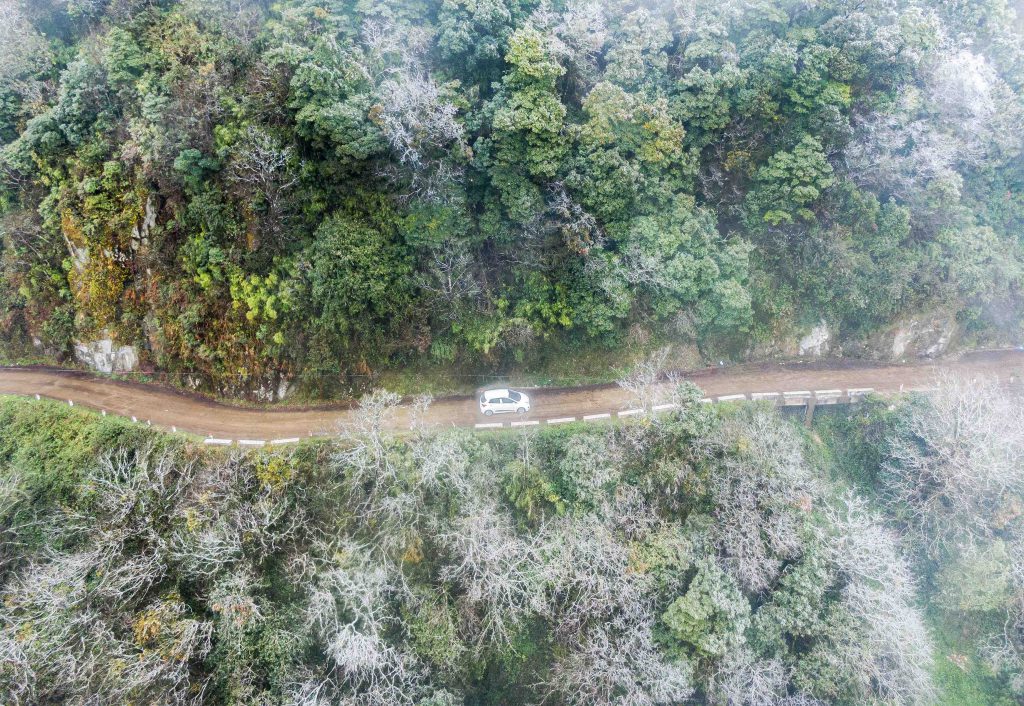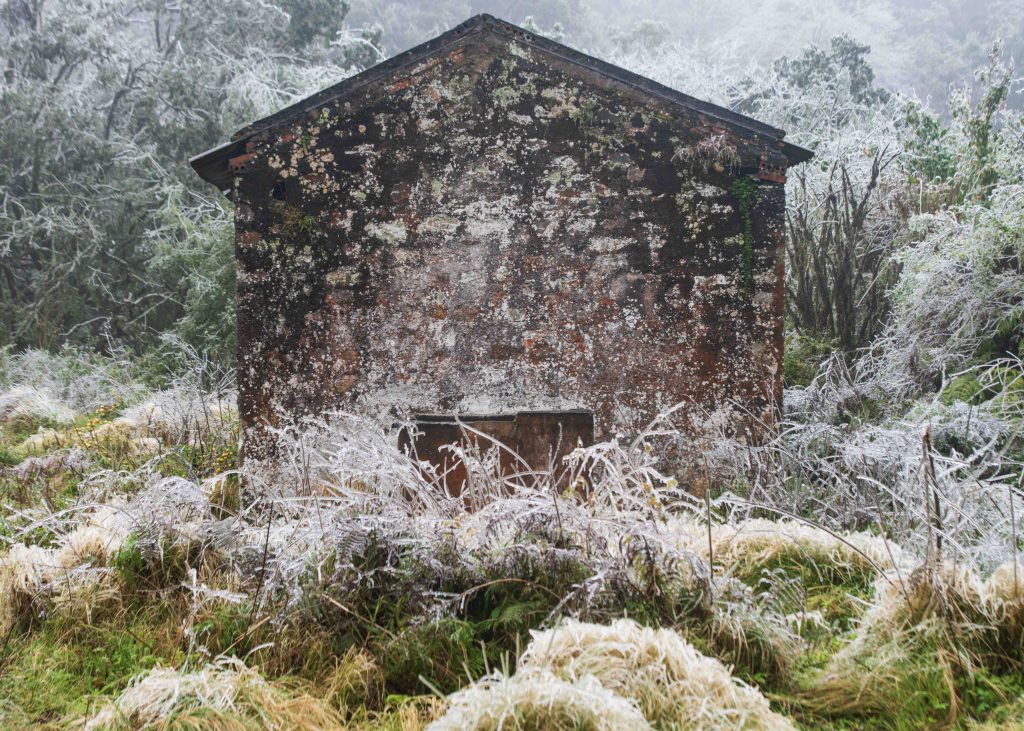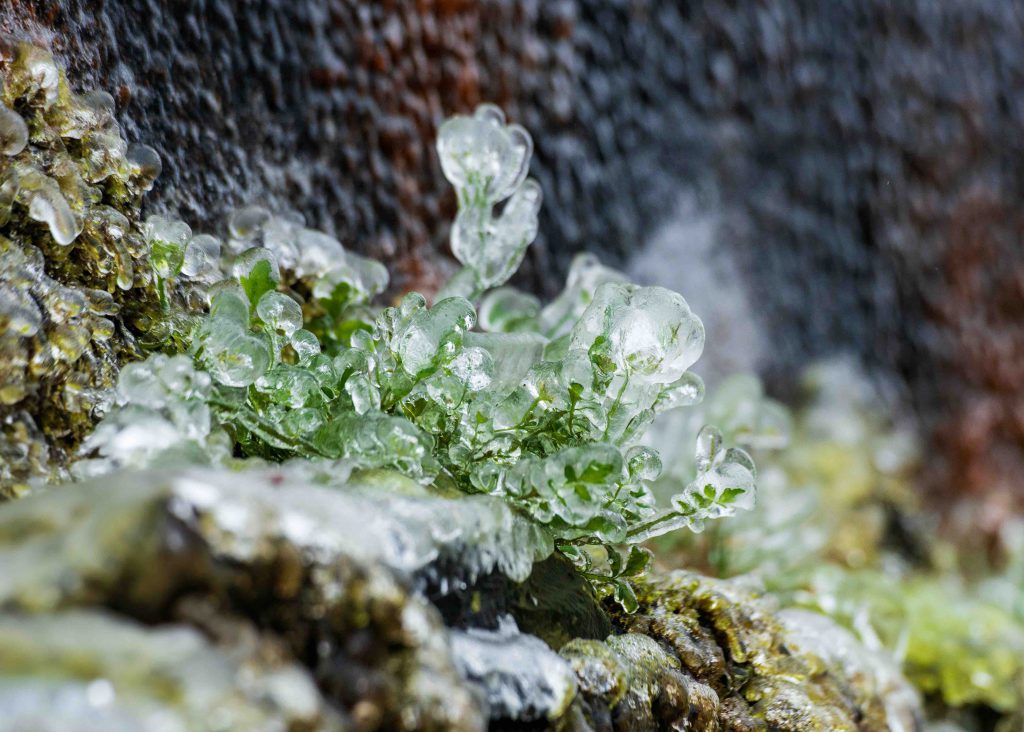Story: Huynh Phuong
Photos: Dao Canh
Along with Sa Pa (Lao Cai) and Mau Son (Lang Son), Phia Oac (Cao Bang) is drawing tourists who love ice and snow, when winter temperatures drop in Vietnam’s northern mountains.

Frosty Phia Oac
Mount Phia Oac (or Phja Oac as locals call it) lies within Non Nuoc Cao Bang Geopark, recognized as a UNESCO Global Geopark in April 2018. At 1,931 meters, Phia Oac is the second-highest peak in Cao Bang, often called “the roof of the province’s western region”. The area’s diverse topography, geology, and unique climate conditions have created distinctive ecosystems. The vegetation varies with altitude, from the base to the summit, with the standout being the dwarf forest ecosystem, where dense moss clings to ancient trees.
As you ascend, the majestic scenery unfolds before your eyes. From the summit, you can glimpse the homes of the Dao, Nung, and Tay people. In the distance, the Quang Thanh River seems to hug the borderlands.
In winter, frost appears in Phia Oac due to cold northern air masses. While frost impacts the lives of highland residents, it also makes the area appealing to tourists.
Many would-be visitors regularly check weather forecasts, hoping to experience snow and frost in this tropical country. In Phia Oac, ice forms at elevations of about 1,400 meters and above. Even below this altitude, the weather is bitterly cold and drizzly. As well as getting frosty, the area is often shrouded in dense fog.

Ice flowers
“Upon hearing there was a high chance of frost on Phia Oac Mountain, I set out immediately at night,” explained Mr. Dao Canh, a photographer based in Hanoi. “Our group traveled from Hanoi to Cao Bang, arriving at 2 AM, and took another car ride to reach the summit of Phia Oac. The temperature at that time was around minus six degrees Celsius.”
The 60-kilometer journey from Cao Bang City to Phia Oac was unforgettable, traversing mountain passes and thick fog at dawn. During the drive, Mr. Dao Canh was overwhelmed with emotion upon seeing ice-covered woods for the first time, the branches and blades of grass adorned with icicles in various shapes. One to two-centimeter-thick sheets of ice clung to objects, including “ice flowers”—thin layers of ice encasing flowers, which added color to the pristine white winter landscape, creating a beautiful and romantic scene. Mr. Dao Canh felt like he was witnessing a Western winter, right here in Vietnam.

Tips for capturing frost photos
On the summit, Mr. Dao Canh encountered other groups of tourists eagerly taking photos, as frost only lasts a few days here before melting. Sub-zero temperatures are rare in Vietnam, so visitors should wear thick coats and masks to stay warm while viewing the frost. Be sure to choose shoes with good tread due to the light rain and slippery ice. Visiting photographers will want to keep snapping away at the ice-encased flowers, so should bring enough batteries for their cameras and drones.
“There are no hotels or homestays in this mountainous area, but we were hosted by staff members of the Voice of Vietnam’s broadcast station on the summit, allowing us to rest overnight and capture photos early the next morning,” explained Mr. Dao Canh. “I will never forget the biting cold late at night and the bone-chilling temperatures. This made us even more appreciative of those who work in such harsh weather conditions.”










